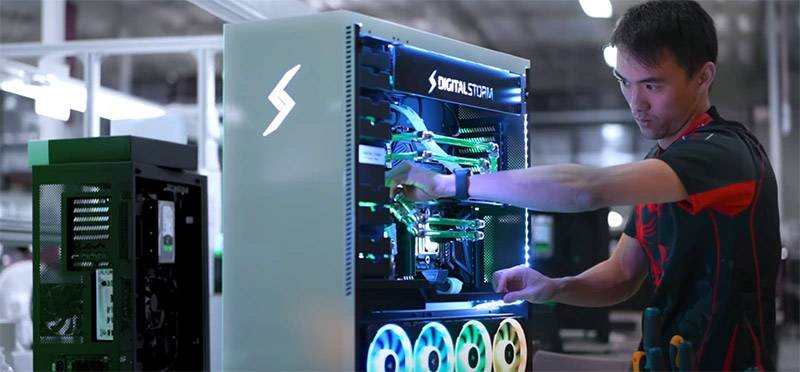How Developers Can Head Off Open Source Licensing Problems

There are proactive steps developers can take as well. For instance, developers
can opt for code that isn’t controlled by a single vendor. “The other side,
beyond the licensing, is to look and to understand who’s behind the license, the
governance, policy,” he said. Another option to provide some cushion of
protection is to use a vendor that specializes in distributing a particular open
source solution. A distro vendor can provide indemnification against exposure,
he said. They also provide other benefits, such as support and certification to
run on specific hardware set-ups. Developers can also look for open source
solutions that are under a foundation, rather than a single company, he
suggested, although he cautioned that even that isn’t a failsafe measure. “Even
foundations are not bulletproof,” he said. “Foundations provide some oversight,
some governance and some other means to reduce the risk. But if ultimately, down
the path, it ends up again being backed up by a single vendor, then it’s an
issue even under a foundation.”
Line of Thought: A Primer on State-Sponsored Cyberattacks

A cyberattack may be an attractive avenue for a state actor and/or its
affiliates since it may give them the ability to disrupt an adversary while
maintaining plausible deniability.15 It may also reduce the risk of a
retaliatory military strike by the victim.16 That’s because actually determining
who was behind a cyberattack is notoriously difficult: attacks can be shrouded
behind impersonated computers or hijacked devices and it may take months before
actually discovering that an attack has occurred.17 Some APTs leverage an
approach called “living off the land” which enables them to disguise an attack
as ordinary network or system activities.18 Living off the land enabled one APT
actor to reportedly enter network systems in America’s critical infrastructure
and conduct espionage—reportedly with an eye toward developing capabilities to
disrupt communications in the event of a crisis.19 The attack occurred sometime
in 2021, but, due to the stealthy nature of living off the land techniques,
wasn’t identified until 2023.
Taking a closer look at AI’s supposed energy apocalypse

Determining precisely how much of that data center energy use is taken up
specifically by generative AI is a difficult task, but Dutch researcher Alex de
Vries found a clever way to get an estimate. In his study "The growing energy
footprint of artificial intelligence," de Vries starts with estimates that
Nvidia's specialized chips are responsible for about 95 percent of the market
for generative AI calculations. He then uses Nvidia's projected production of
1.5 million AI servers in 2027—and the projected power usage for those
servers—to estimate that the AI sector as a whole could use up anywhere from 85
to 134 TWh of power in just a few years. To be sure, that is an immense amount
of power, representing about 0.5 percent of projected electricity demand for the
entire world (and an even greater ratio in the local energy mix for some common
data center locations). But measured against other common worldwide uses of
electricity, it's not representative of a mind-boggling energy hog. A 2018 study
estimated that PC gaming as a whole accounted for 75 TWh of electricity use per
year, to pick just one common human activity that's on the same general energy
scale
Stepping Into the Attacker’s Shoes: The Strategic Power of Red Teaming
Red Teaming service providers are spending years preparing their infrastructure
to conduct Red Teaming exercises. It is not feasible to quickly build a
customized infrastructure for a specific customer; this requires prior
development. Tailoring the service to a particular client can take anywhere from
one to four months. During this period, preliminary exploration takes place. Red
Teams use this time to identify and construct a combination of infrastructure
elements that will not raise alarms among SOC defenders. ... The focus has
shifted towards building a more layered defense, driven by Covid restrictions,
remote work and the transition to the cloud. As companies enhance their
defensive measures, there is a growing need to conduct Red Teaming projects to
evaluate the effectiveness of these new systems and solutions. The risk of
increased malicious insider activity has made the hybrid model increasingly
relevant for many Red Teaming providers. This approach is neither a complete
White Box, where detailed infrastructure information is provided upfront, nor
traditional Red Teaming.
Six NFR strategies to improve software performance and security

Based on their analysis and discussions with developers, the researchers
identified six key points: Prioritization and planning: NFRs should be treated
with as much priority as other requirements. They should be planned in advance
and reviewed throughout a development project. Identification and discussion:
NFRs should be identified and discussed early in the development process,
ideally in the design phase. During the evolution of the software, these NFRs
should be revisited if necessary. Use of technologies allied with testing: The
adequacy of the NFR can be verified through technologies already approved by the
market, where the NFRs associated with those projects satisfy the project's
complexity. Benchmarks: Using benchmarks to simulate the behavior of a piece of
code or algorithm under different conditions is recommended, since it allows
developers to review and refactor code when it is not meeting the
project-specified NFRs. Documentation of best practices: By keeping the NFRs
well-documented, developers will have a starting point to address any NFR
problem when they appear.
Exploring the IT Architecture Profession

In IT architecture, it takes many years to gain the knowledge and skills
required to be a professional architect. In my opinion, at the core of our
profession are our knowledge and skills in technology. This is what we bring to
the table; it is our knowledge and expertise in both business and technology
that make the IT architecture profession unique. In addition to business and
technology skills, it is essential that the architect possesses soft skills such
as leadership, politics, and people management. These are often undervalued.
When communicating IT architecture and what an IT architect does, I notice that
there are a number of recurring aspects: scope, discipline, domain, and role.
... Perhaps the direction for the profession is to focus on gaining consensus
around how we describe scope, domain and discipline rather than worrying too
much about titles. An organisation should be able to describe a role from these
aspects and describe the required seniority. At the end of the day, this was a
thought-provoking exercise and with regards to my original problem, the
categorisation of architecture views, I found that scope was perhaps the
simplest way to organise the book.
Why collaboration is vital for achieving ‘automation nirvana’
Beeson says that one of the main challenges of implementing automation is
getting different teams to collaborate on creating automation content. He
explains that engineers and developers often have their own preferred
programming language or tools and can be reluctant to share content or learn
something new. “A lack of collaboration prevents the ‘automation nirvana’
of removing humans from complex processes, dramatically reducing automation
benefits,” he says. “Individuals tend to be reluctant to contribute if they
don’t have confidence in the automation tool or platform. “Automation content
developers want the automation language to be easy to learn, compatible with
their technology choices and provide control to ensure the content they
contribute is not misused or modified.” ... When it comes to the future of
automation, Beeson has no shortage of thoughts and predictions for the sector,
especially relating to the role of automation in defence. “Defence is not immune
from the ‘move to cloud’ trend, so hybrid cloud automation is becoming ever more
prevalent in the sector,” he says
Securing the digital frontier: Crucial role of cybersecurity in digital transformation advisory

Advisory services have the expertise to perform in-depth technical security
assessments to identify and help prioritize vulnerabilities in an organization’s
infrastructure. These assessments include the use of specialised tools and
manual testing to do a comprehensive assessment. Systems are examined to
validate if they are following security best practices and prescribed industry
standards. ... Advisors help organisations develop threat models to identify
potential attack vectors and assess associated risks. Several methodologies like
STRIDE, Kill Chain and PASTA are used to systematically analyse threats and
risks. ... An organisation’s security is only as good as its weakest link, and
generally, the weakest link is an individual of the organisation. Advisory
services undertake regular training to educate and inform employees on security
best practices. They can also support with simulation training such as phishing
simulations and develop comprehensive security awareness programs that cover
topics like secure password practices, data handling, data privacy, and incident
reporting.
Delving Into the Risks and Rewards of the Open-Source Ecosystem

While some risk is inevitable, enterprise teams need to have an understanding of
that risk and use open-source software accordingly. “As a CISO, the biggest risk
I see is for organizations not to be intentional about how they use open-source
software,” says Hawkins. “It's extremely valuable to build on top of these great
projects, but when we do, we need to make sure we understand our dependencies.
Including the evaluation of the open-source components as well as the internally
developed components is key to being able to accurately [understand] our
security posture.” ... So, it isn’t feasible to ditch open-source software, and
risk is part of the deal. For enterprises, that reality necessitates risk
management. And that need only increases as does reliance on open-source
software. “As we move towards cloud and these kind of highly dynamic
environments, our dependency on open-source is going up even higher than it ever
did in the past,” says Douglas. If enterprise leaders shift how they view
open-source software, they may be able to better reap its rewards while
mitigating its risks.
Rethinking physical security creates new partner opportunities
Research conducted by Genetec has showed a 275%
increase in the number of end users wanting to take more physical security
workloads to the cloud. Research also indicates that many organisations aren’t
treating SaaS and cloud as an ‘all or nothing’ proposition. However, while a
hybrid-cloud infrastructure provides flexibility, it also has implications in
being the gateway to the physical security cloud journey. Organisations needs to
ensure that there are tools in place that can protect data regardless of their
location. ... Organisations that aren’t able to keep up with the upgrade cycle
often become subject to the consumption gap. This is where the end user can see
the platform evolving with new features and functionality, but are unable to
take advantage of all of it. The bigger the consumption gap, the more likely
it’s to be holding the organisation back from physical security best practices.
SaaS promises to close that gap because it keeps organisations on the latest
software version. Importantly, their solution is updated in a way that is
pre-approved by the organisation and on a timeframe of their choosing.
Quote for the day:
"Without growth, organizations struggle
to add talented people. Without talented people, organizations struggle to
grow." -- Ray Attiyah
No comments:
Post a Comment